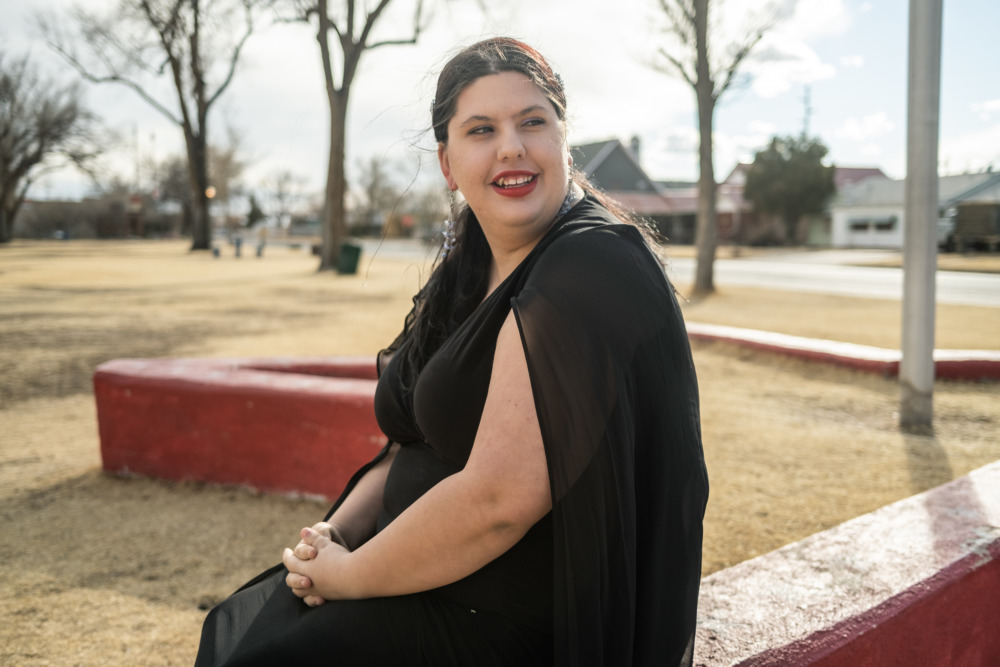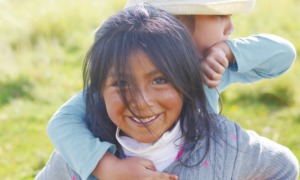Two years after New Mexico agreed to overhaul its foster care system in response to a lawsuit claiming it systematically re-traumatizes children in its care, the state lags on its commitments and is struggling to enact the required reforms.
The settlement of the Kevin S. complaint, named for one of the plaintiffs, was lauded as groundbreaking when it was announced in March 2020 for its promise to create a “trauma-responsive” system of care that prioritized placing children in secure family settings.
But child welfare advocates say the state’s delays in implementing many of the settlement requirements puts thousands of children in state custody at risk of further harm.
Critics question the state’s practice of temporarily placing some foster children in offices and in out-of-state facilities, which the agreement prohibits except in extraordinary circumstances. The state has even argued that it is not required to review the safety of out-of-state facilities before sending its charges there.

Ramsay de Give
Bette Fleishman, an attorney and executive director of Pegasus Legal Services for Children, represents two of the plaintiffs in the Kevin S. case. She says the state must do more to meet its commitments to children in its care.
Meanwhile, the state struggles to create a sufficiently large, diverse pool of qualified foster families and caseworkers. And it has not yet met many of its obligations to provide more culturally appropriate support to Native children in state custody.
“It’s just not acceptable at this stage,” said Bette Fleishman, an attorney and executive director of Pegasus Legal Services for Children, who represents two of the plaintiffs.
Several settlement deadlines were extended due to the pandemic, and “that was always the excuse,” Fleishman said. “’COVID, COVID, COVID — can’t do it.’ And you know what? It’s not OK anymore.”
The state knows it’s behind — and the new head of child welfare has vowed to do better.
Barbara Vigil, a former state Supreme Court judge, took the department’s helm in October, just weeks before an independent oversight team called the co-neutrals issued its first progress report on the settlement’s implementation — a biting assessment that found fewer than 25 percent of settlement targets had been met.
“It was horrible,” Fleishman said.
The department has since “investigated, identified, and is addressing some internal impediments… and other management issues that may have resulted in unnecessary bottlenecks and communication challenges,” Vigil said. But she acknowledged the state has fallen short.
“It’s not to say that we have failed, but that we have not reached success in the timeline that they would have hoped,” she said.
The co-neutrals’ report acknowledged the setbacks posed by the pandemic and the broad scope of the reforms required by the final settlement agreement.
“New Mexico is still very much in the beginning stages,” they wrote of the required systemic changes.
While some new policies and practices have been developed, the co-neutrals said they have been unable to validate many of those reforms at the time of their writing, noting skepticism from community advocates who question evidence of the state’s progress and transparency.
Furthermore, the oversight team said the state failed to provide complete, consistent data on several important metrics, including how children entered and exited the system, and the number of staff needed to meet caseload standards.
The co-neutrals’ report acknowledges state leaders’ willingness to work toward necessary reform.

Ramsay de Give/Youth Today
Children, Youth and Families Department Secretary Barbara Vigil took over the agency just weeks before the first progress report on the Kevin S. settlement. Advocates have expressed hope that Vigil, a former state Supreme Court judge, can turn the troubled department around.
Vigil said she and Human Services Department Secretary David Scrase are committed to developing and implementing a new child welfare system “built on a foundation of understanding and acknowledging the impact that…the state has upon the trauma that kids experience when they come into our system.”
The settlement’s primary accountability mechanism is the publication of regular public reports, and the possibility of mediation and arbitration if the two sides are unable to resolve their disputes.
The plaintiffs are prepared to pursue those avenues, if necessary.
“These kids deserve better,” Fleishman said. “They really deserve better.”
The initial case, Kevin S., et al. v. Blalock and Scrase, was filed Sept. 22, 2018, on behalf of 13 children between the ages of 1 and 17, and two nonprofits.
The complaint accused the state of failing to screen foster children for trauma or provide appropriate therapeutic services. The medical community widely acknowledges that such trauma significantly impacts brain activity, function and development in children.
The lawsuit was dismissed in the settlement, which requires dozens of reforms under four broad categories: improving foster care placements, meeting Native children’s unique needs, creating a trauma-responsive system of care, and ensuring access to proper behavioral health services.
Appropriate placements
“The biggest concerns are inappropriate placements,” said Jesselyn Friley, staff attorney for the pro bono Public Counsel, who was part of the Kevin S. litigation and implementation teams.
Under the agreement, New Mexico has committed to building a system that matches children with the least restrictive, most family-like placements possible. The co-neutrals’ report, which relied on data through Sept. 1, 2021, outlined 12 targets related to placements; one was met past the deadline, and all others were either not met or incomplete.
According to CYFD data, 1,978 children were in state custody at the end of 2020. Of those, 85 percent lived in family settings — nearly half with non-relative foster families. Just over 6 percent were in congregate care facilities like group homes.
During 2020, at least 117 children had at least one placement in a hotel, motel, office or out-of-state facility. The original lawsuit alleged that such practices locked foster children into “a vicious cycle of declining physical, mental and behavioral health.”
The settlement stipulated that as of Dec. 1, 2020, “No child under 18 will be placed in any hotel, motel, out-of-state provider, office of a contractor, or state agency office unless in extraordinary circumstances necessary to protect the safety and security of the child.”
But it’s still happening.
As of April 2022, CYFD Public Information Officer Robert Johnson said the department had a total of 1,777 children in state custody; of those, 26 were placed in out-of-state facilities and another 91 were in other out-of-state settings, such as foster family homes.
The co-neutrals’ report had faulted the state for failing to provide evidence that child welfare officials reviewed out-of-state providers’ safety records, and for at one point arguing that doing so was outside its purview.
Johnson said the department is addressing those concerns.
“We are very committed to ensuring that every out-of-state facility that houses our youth is a safe and secure placement,” he said. He added that the state is developing a process to assess each facility that shelters New Mexico children and noted that each child’s social worker or case manager visits the child in person every month.
Vigil also said CYFD is forming multidisciplinary teams to evaluate the need to send any particular child out of state. As secretary, she has the final say, based on the team recommendation.
“I approve every out-of-state placement,” she said. She cited an example of a young girl she recently approved for a Texas facility that has a particular treatment program that could meet her medical needs.
But according to the co-neutrals’ report, such placements are “no longer allowed … unless CYFD has validated the child would not be safe or secure in any other placement in New Mexico.” State child welfare officials say the state doesn’t have sufficient behavioral health services. Many foster children have “acute needs that cannot be met with existing in-state providers or with our own initiatives,” CYFD spokesperson Charlie Moore-Pabst said.
Fleishman recognizes the problem, too. She said CYFD often just doesn’t know what to do with traumatized children in its care; somewhere along the line, the department started shipping kids out of state — to facilities in Colorado, Texas, Utah.
“It was convenient,” she said. “It just became the practice.”
One of her clients was sent to a Colorado facility that was eventually closed, she said. Investigators later uncovered 243 reports of suspected abuse, neglect, excessive restraint, inadequate nutrition and other harms.
“They found a young girl sitting in the closet eating her own skin,” Fleishman said.
In addition to out-of-state placements, Vigil also acknowledged that some foster children are still temporarily sleeping in agency offices “as the last option.”
“Office stays are really the consequence of not having adequate behavioral health services for that child at that moment,” she said.
Advocates say they hear stories of children sleeping on bean bags in offices where the lights stay on all night — no kitchen, no shower.
But Vigil painted a different picture. “When we say a child is staying in an office, it’s not like they’re sleeping on the floor,” she said. “There is actually privacy, there’s a bed, there’s food…it’s safe.”
Sometimes, children are sent to an office when no other option is immediately available, she said, or when teenagers refuse to move. Under state law, children 14 and above have the right to reject a placement.
Fleishman said the state needs to examine why this happens. It’s often because the placement they are offered is “a wrong place for them to go,” she said.
Maybe it’s a residential treatment facility that doesn’t jibe with the child, or a foster family with bad chemistry, or a home in another culture. Whatever the reason, she said, it’s the state’s obligation to provide services that meet each child’s needs, even if it takes extra work or outside expertise.
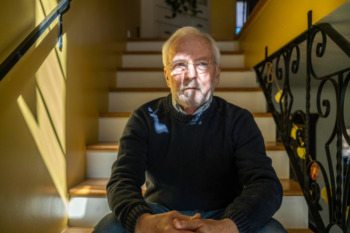
Ramsay de Give
George Davis, the former head of psychiatry for New Mexico’s child welfare department and a member of the settlement implementation team, said the system’s flaws were decades in the making. “I’ve been doing this since the ‘80s and watched this happen,” he said.
George Davis, CYFD’s former head of psychiatry and a member of the settlement implementation team, said secure placements are “essential” for a child’s healthy development. He linked the dearth of appropriate placements to years of structural problems at the department.
“They hadn’t planned well; they hadn’t thought it through; they hadn’t developed a network of foster parents who are durable, well-informed, well-educated, and well-supported,” he said. “That’s the central failure of this system…. I’ve been doing this since the ‘80s and watched this happen.”
Despite its shortcomings, he sympathizes with the department’s leaders and staff.
“There’s nothing harder than managing a system with children who have been abused and neglected,” he said. To do the job right, he said the department needs an overhaul.
“There’s no tweaking the system,” Davis said. “You have to change the way you do business.”
As it is, many foster children bounce from one place to the next, obliterating the sense of stability and security that children need for proper development.
“It’s not uncommon for me to talk to a kid who’s been in 20 or even 30 different foster placements,” Davis said.
Felicia Cater, 18, knows what that’s like. She wasn’t part of the Kevin S. lawsuit, but her experience of constant upheaval in the system exemplifies the trauma that many foster youth endure.
Cater was six months old when she first entered the system. Since the age of 12, she has never stopped moving: relative to relative; shelter to shelter; from treatment foster care to safe youth housing; from North Dakota to Oklahoma to cities across New Mexico.
“I never fully unpack my crap — ever,” she said. “CYFD has a tendency of not telling you when they’re coming to pick you up, and so if your stuff isn’t together, you’re essentially doomed.”
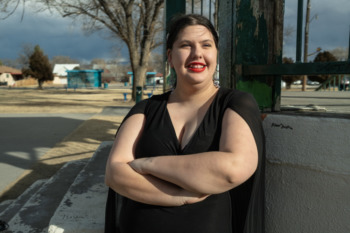
Ramsay de Give
Felicia Cater says her unstable childhood in state custody has left her unable to trust easily. She wants to be a cop and a therapist to help others.
Now that she has aged out of the system, Cater is living with her biological mother again. The more she learns about her birth family, she said, the more she doubts the necessity of her original removal. She wonders how her life might have fared if the state had found a way to keep her family intact.
“Because of my past, it’s extremely hard for me to trust people,” she said. She calls herself “judgy,” making split-second decisions about a person’s character.
“I usually have a very, very small social circle,” she said.
But her past has also made her empathetic. She tries to help others facing difficulties because, “I don’t want them to go through the pain that I went through,” she said. That’s why she wants to be a cop and a therapist — to do a better job than the ones she has encountered; to be the adult who listens.
Native children
Native foster children face even greater challenges. New Mexico is home to 23 federally recognized tribes and pueblos, each with its own culture and traditions.
Nationally, Indigenous families are four times more likely to have their children placed in foster care than white families. In New Mexico, a shortage of Native foster families means those children are often placed outside their tribal communities.
“It further removes them from their community and from their culture,” said Therese Yanan, executive director of the Native American Disability Law Center, one of the Kevin S. plaintiffs.
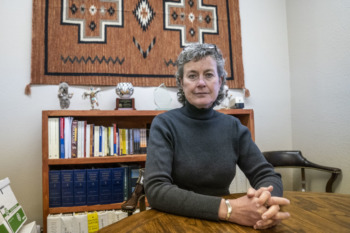
William Weaver
Therese Yanan, executive director of the Native American Disability Law Center, one of the plaintiffs in the Kevin S. case. Yanan said New Mexico needs to communicate with Native families and tribes to ensure culturally appropriate support.
The state has made some progress on these issues. CYFD created a formal Tribal Affairs Unit, and the state’s first Native family court has had success keeping more Indigenous children in their own communities. New Mexico also recently passed a state version of the federal Indian Child Welfare Act, which is under threat at the US Supreme Court.
However, the state had not met settlement mandates for ensuring access to Native ceremonies, recruiting Native foster families, collecting and analyzing data on Native children’s needs and training CYFD staff by the time the co-neutrals wrote their report.
For example, Yanan said one of her clients, a Navajo girl, wanted a coming-of-age ceremony called a Kinaaldá, and it’s “virtually impossible” because there is no consistent system for arranging such functions in foster care.
Yanan said CYFD needs to communicate better with tribal communities and “listen to families,” especially when it comes to recruiting Native foster parents. Language, lack of Internet access on reservations and differences in communication styles are all barriers to finding, recruiting and licensing a healthy cohort of Native foster families.
Johnson said the department is using formal surveys, focus groups with youth and families, and consultations with tribes and pueblos to strengthen foster family recruitment efforts. CYFD is also relying on a new tool called Child and Adolescent Needs and Strengths with the aim of finding “more tailor-made” placements in a “more child-centered model of care,” Johnson added.
Responding to trauma and ensuring access to proper behavioral services
Foster children experience multiple traumas — the initial trauma that prompted removal from the home, the removal itself, and often, as the Kevin S. lawsuit alleged, subsequent traumas experienced within the system.
“When you disrupt the primary caretaker relationship, that is the means by which humans are designed to develop,” said Davis.
Removing a child from home is so destructive, there’s a growing national movement to abolish the child welfare system entirely. Proponents say the focus should be on root causes, often tied to poverty and structural racism.
Experts characterize trauma as the psychological and neurological effects of difficult experiences that result in physical, psychological, social and emotional troubles in the aftermath.
“The younger a child is … the more severe the trauma, the more it’s going to affect them going forward, because the development is cumulative,” said Friley of Public Counsel.
The consequences are staggering, putting traumatized youth at greater risk of chronic health conditions, substance abuse, incarceration and a shorter lifespan.
CYFD has never had the expertise it needs to properly identify and treat such traumas, experts say. But that could change.
In February, the state legislature granted the Human Services Department a $20 million special appropriation for developing behavioral health services equipped to deal with children and trauma.
The Kevin S. settlement also aims to bring more science into New Mexico’s foster care system: new medication protocols, new screenings to find and treat early childhood trauma and workers trained to do so.
To that end, the state has implemented two new Child and Adolescent Needs and Strengths tools, designed to screen and assess childhood trauma and individual care needs — some of the settlement targets that have been met.
New leadership, more funding could help meet settlement targets
New Mexico child welfare advocates are hopeful that Vigil can turn the department around.

Ramsay de Give
Barbara Vigil, who heads New Mexico’s child welfare department, said kids and families must be better off for having had contact with her department. Representatives for the plaintiffs in the Kevin S. settlement say she has improved communication since assuming her role.
“She’s really been good about opening up lines of communication,” Fleishman said, noting that CYFD is now meeting regularly with Kevin S. team members. “We don’t agree on everything yet — we probably never will, but just that she’s made that effort and said she wants to meet with us every month, I think is a big plus.”
Still, the department needs a profound shift in the way it works, child welfare advocates say.
“It is a massive job,” said Friley. “This just requires a large culture change, a significant investment on the part of the departments to accept what they’ve agreed to, and to carry out those things.”
“In some cases, we get the sense that they don’t really know how to do what they need to do,” she added.
For example, under Kevin S., the department agreed to lower the overall employee workload so that caseworkers were not stretched too thin to provide quality service.
But the co-neutrals expressed frustration that, despite specific and repeated requests, the state did not set a caseload standard or adequate plan by the time of their writing.
Since then, Moore-Pabst said the agency has set a goal of no more than 12 cases per caseworker per month. The definition of case varies depending on context, but statewide averages ranged between roughly 15 and 19 as of December.
To help achieve this goal, the department has secured additional funding from the state, and will also benefit from state employee salary increases across the board.
“These jobs are hard,” Vigil said. “Because these are people who are trying to help a family in crisis and that takes a tremendous amount of commitment and dedication and patience in situations that are uncomfortable, that are tragic, that are difficult.”
Overall, the legislature gave the CYFD general fund operating budget a $16 million boost for a total of $230 million in the 2023 fiscal year, all of which will directly or indirectly aid settlement targets, Vigil said.
“The whole approach to child welfare under my leadership, as secretary, ultimately rests on the commitment that kids and families must be better off in their lives for having had contact with the department,” she said.
To Kevin S. and all the other plaintiffs; to Cater and all the children in the system today, Vigil has a message:
“Their lives in the system will not be in vain,” she said. “Their lives will teach us how to do things better.”


